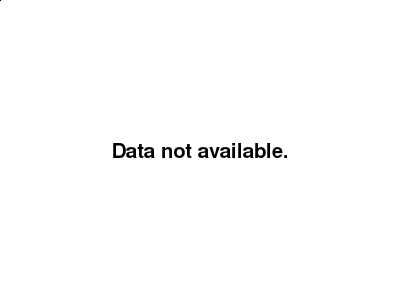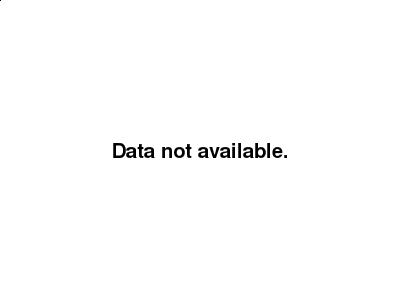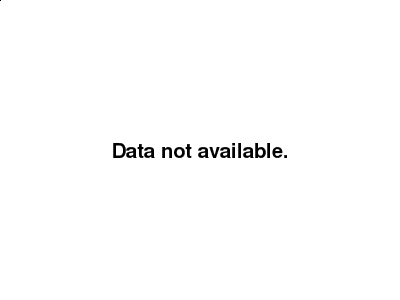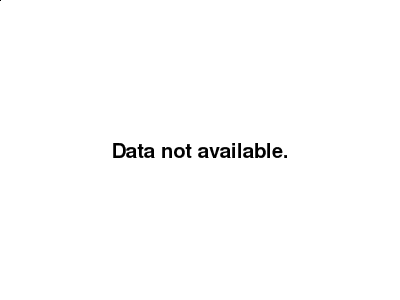Friday April 8: Five things the markets are talking about
Global equity markets are taking back some of Thursday’s losses as we enter the final trading session of the week. With safe haven asset prices dominating proceedings, dealers continue to watch the yen closely, waiting for the proverbial ‘other shoe’ to make a direct material impact. With Japanese cabinet officials rhetoric highlighting the growing uneasiness over a rising yen, how many investors are truly listening?
The yield on the U.S benchmark 10-year note fell below +1.7% Thursday afternoon for the first time since February. It was a steep -6 basis point drop from the previous day’s close. The cause? It was nothing major in terms of economic events, just more worries about global growth leading to risk-off trading, plus the potential for more stimulus to be added in Europe.
1. EM currencies take a pounding
Yesterday, it was catch up pain trade day for most EM pairs. Emerging market currencies plummeted on a classic risk-off day while gold and yen both rallied strongly as the market sought safe-haven assets with gusto.
BRL weakened -1.7% outright, while the MXN and MYR weakened -1.65% and -1.4%, respectively.
It has been a bit of a market anomaly of late with the ‘one directional’ yen trading higher and acting as the sole risk aversion trade, while the risker EM currency pairs have been relatively trading unaffected. Thursday’s big losers in emerging markets are those “high-yielding” currencies, which are more sensitive to macro moves.
Now the trick for investors is to gage how deep this risk-aversion trade is willing to go?

2. Is DKK intervention on the horizon?
DKK is on the rise again and threatening to break below the psychological €7.44 level. Historically, the krone was trading atop current levels in latter half of 2014 and early 2015 when Denmark’s NationalBank intervened to weaken their own currency.
Fixed income dealers are suggesting that with shorter-dated EUR/DKK FX forwards moving to the left this week, likely reflects the market pricing in a higher probability that NationalBank will intervene in the FX market by selling DKK and potentially cutting the key policy rates.
Royal Director, Lars Rohde’s mandate is to keep EUR/DKK in a band around €7.46038, but in practice officials tend to keep it in a very tight range. The Nationalbank did not intervene last month. Prior to that they had been intervening to stem DKK weakness not strength.

3. EUR surges to a six-month high despite ECB “talking heads”
ECB policy makers yesterday did not rule out more rate cuts at their March policy meeting last month, and judged there was little evidence of bad side effects from negative rates.
In last months ECB monetary policy press conference, Draghi stated that he did not “anticipate any more rate cuts as the ECB turned to other instruments,” – this statement alone has helped spark the current streak of EUR strength.
Thursday’s minutes indicate that several council members were willing to consider deeper rate cuts and that future rate cuts remain on the table.
Commenting ahead of yesterday’s release, Draghi noted that the “current year will be no less challenging” than the previous one, and warned capital markets that the eurozone still faces disinflationary pressure and an uncertain economic outlook.

4. Yen Eyeing ¥105 – Bank of Japan (BoJ) in play?
Like a “hot knife through butter” is the best way to describe the yen’s recent performance. USD/JPY tumbled to new a 18-month low yesterday below the psychological ¥108 handle. Japanese officials indicated they have been “watching the situation closely,” but have so far refrained from any FX intervention.
Many dealers and traders are struggling to reasonably explain the yen’s strength. The top of the waves arguments been put forward range from technical factors, to the G20’s pledge not to intervene been cited, as well as investors lingering fears about the global economy also being mentioned.
Dealers are now wondering how aggressive the BoJ is expected to be? The market has been record short yen futures’ and the latest dollar move has many speculating some form of intervention by the Government or BoJ. Technical analysts have eyed ¥105 as the next key dollar support level that the BoJ could provide rhetoric support.
According to Mr. “Yen,” former Minister of Finance, Eisuke Sakakibara (was in charge of currency intervention), he remains more bullish on his own currency, seeing it rallying to ¥105 in H2 as the outlook for the world economy worsens. He said that “a climb to ¥105 only then is likely to prompt Japanese officials to intervene verbally to try and talk it down, while gains past ¥100 could see physical intervention to weaken it.”

5. Canadian employment and Bank of Canada (BoC)
The loonie will be kept busy over the next few trading sessions. Despite the commodity sensitive currency being held hostage to moves in world crude prices, any strong deviation from this morning’s Canada job print (expected: +10.4k headline and +7.3% unemployment rate) should have a material impact on the CAD’s value.
Next week it’s the Bank of Canada (BoC) monetary policy decision announcement (Wednesday April 13 10am EDT) that should be having the biggest impact.
Currently, consensus expects Governor Poloz to stand pat on rates and maintain a “neutral” outlook on future changes. Why? There has been a moderate improvement seen to Canada’s economic-growth outlook – supported in part by PM Trudeau’s government-stimulus plans and a strong GDP print in January.

Content is for general information purposes only. It is not investment advice or a solution to buy or sell securities. Opinions are the authors; not necessarily that of OANDA Business Information & Services, Inc. or any of its affiliates, subsidiaries, officers or directors. If you would like to reproduce or redistribute any of the content found on MarketPulse, an award winning forex, commodities and global indices analysis and news site service produced by OANDA Business Information & Services, Inc., please access the RSS feed or contact us at info@marketpulse.com. Visit https://www.marketpulse.com/ to find out more about the beat of the global markets. © 2023 OANDA Business Information & Services Inc.



